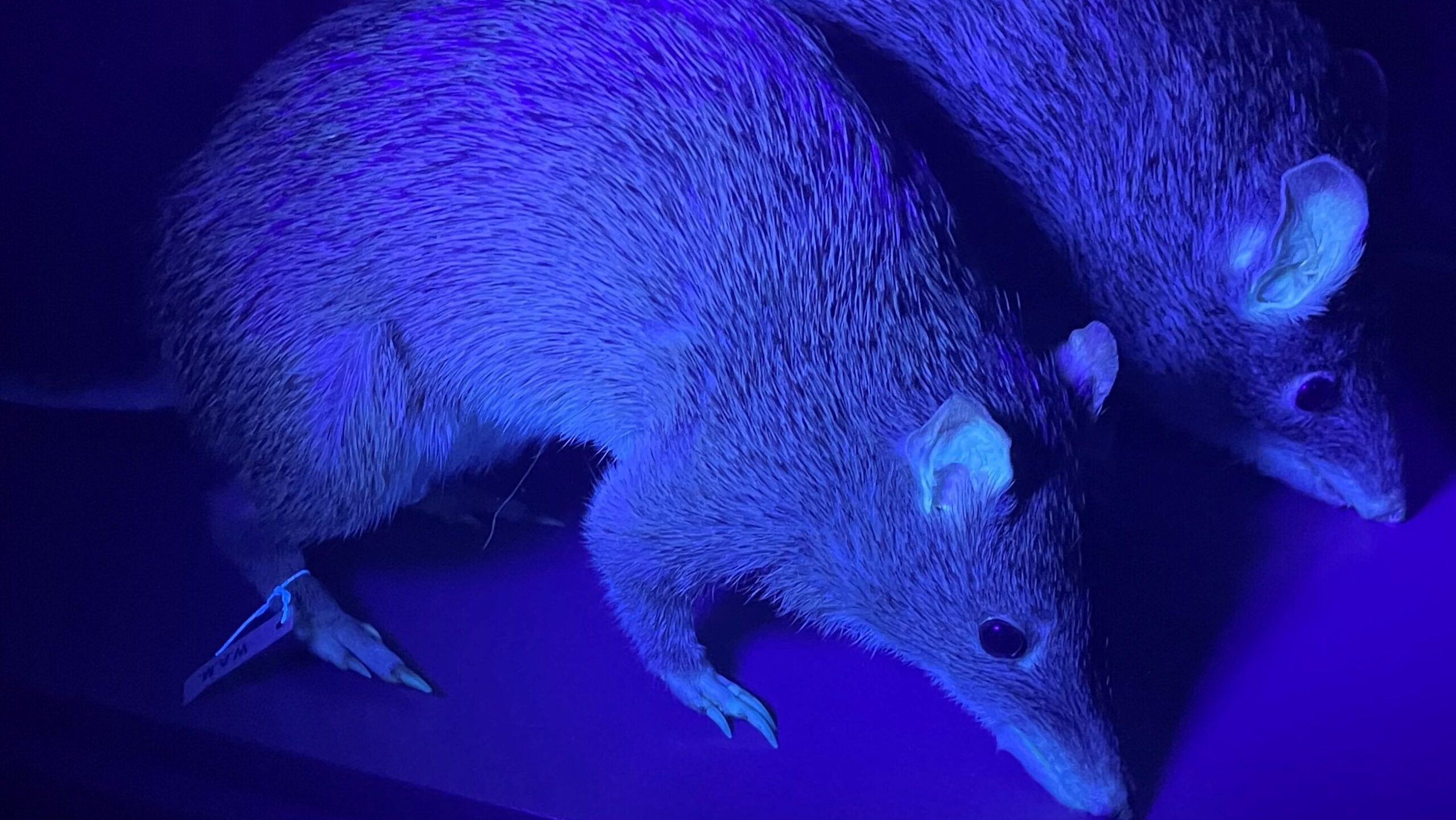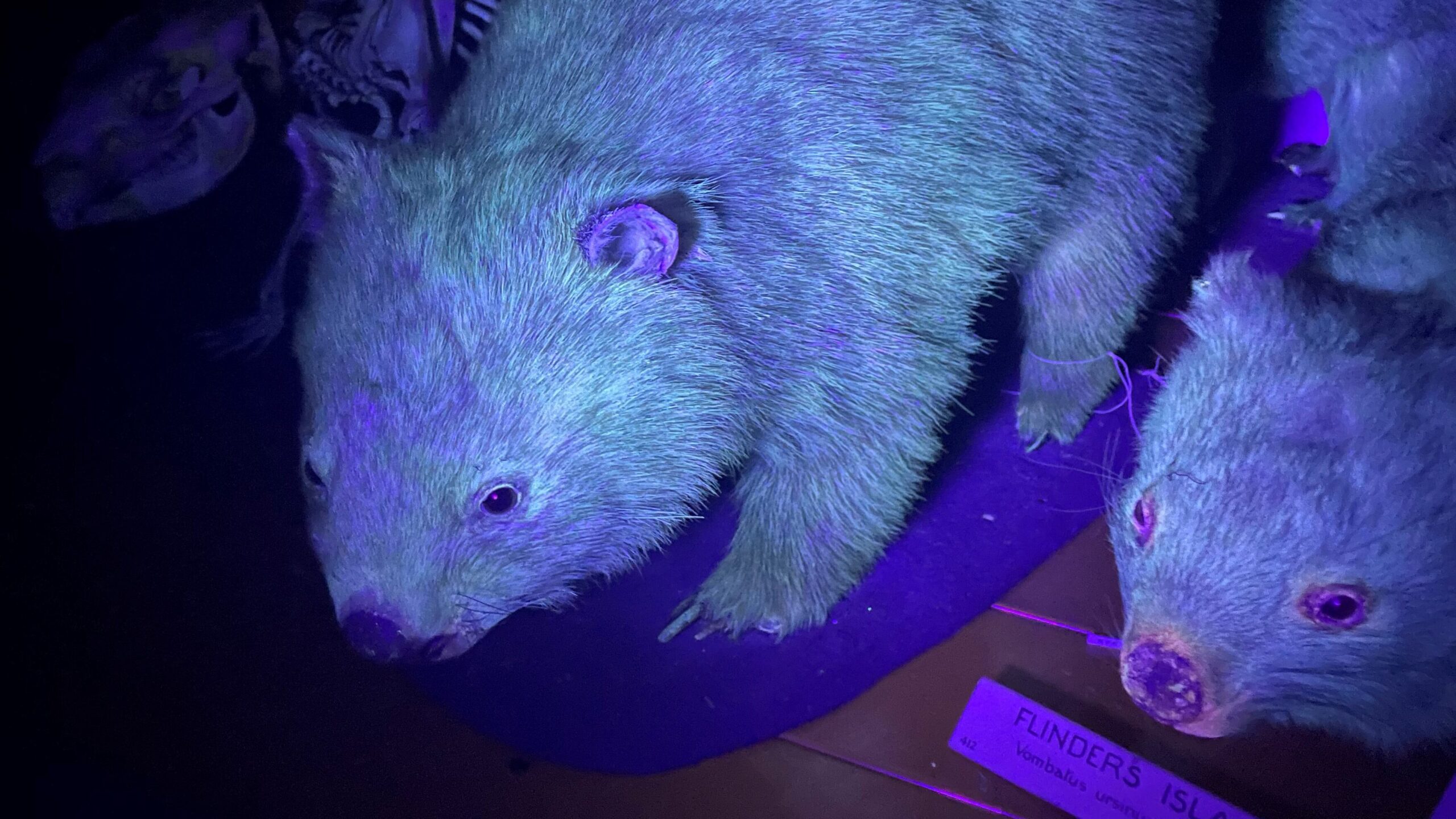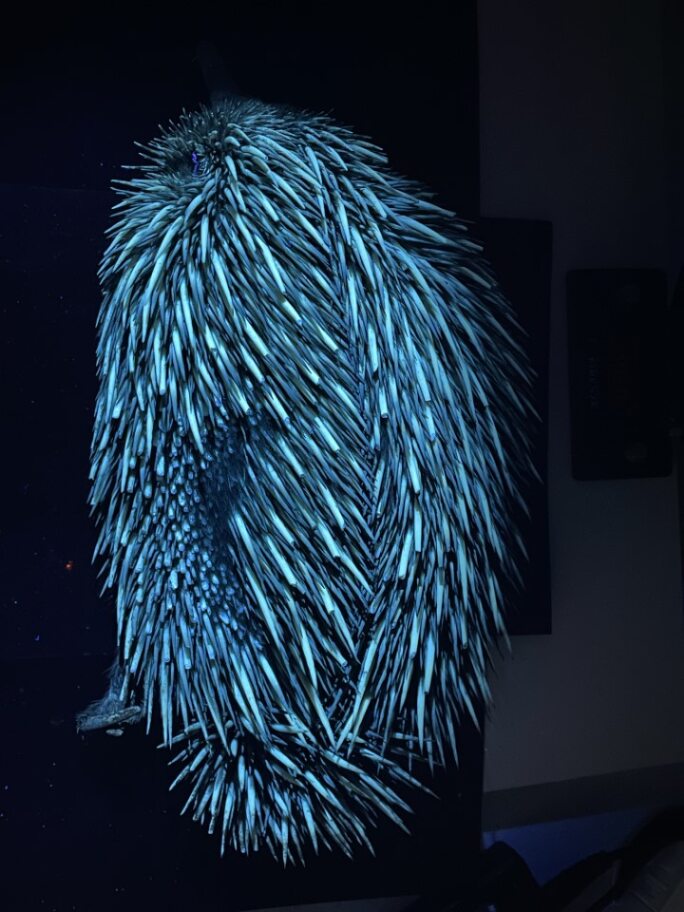Museum staff discover hundreds of mammals glow under UV light

An incredible 125 species have been found to have this unusual trait, a new study published in the October 2023 issue of the Royal Society Open Science journal reports.
It all started with a pinch of curiosity in October 2020, when Dr Kenny Travouillon, curator of mammals at the Western Australian Museum in Perth, learned about glowing platypuses. A study, published in the journal Mammalia, showed that platypuses have fluorescent fur that glows when exposed to UV light.

This piqued his interest, and after learning about the research, Kenny did the only logical thing.
“It all started when my colleague, Linette Umbrello, told me about the platypus fluorescence research. It inspired us to pick up a UV light and wander around the museum’s mammal collection to see if our specimens were doing the same thing,” Kenny says.
Previous studies have shown that some mammals have fluorescent fur, including some species of monotremes, marsupials and mammals. But, until now, we had no idea of how widespread this peculiar trait was across the mammalian tree of life.
To the surprise of Kenny and his team, pretty much every specimen they tested seemed to have some ability to glow. “We didn’t expect it would involve so many mammals, to be honest. As we shone the light at the taxidermied specimens in the collection, we were constantly surprised. It was quite exciting in the end,” says Kenny.
To confirm their observations, Kenny conducted a more formal study with the help of colleagues from Perth’s Curtin University. They tested the fluorescence of frozen specimens and used the university’s fluorescence spectrophotometer, which allowed them to record precise data on which part of the animal glowed the most.
Their analyses confirmed their initial observations: these mammals can glow, and how they are preserved also matters. “For the platypus we found that the fluorescence was more intense in the preserved specimens, compared to the frozen specimen. But we found the opposite was true for the koala and the devil. Their fluorescence was more intense in the frozen specimens,” says Kenny.
Why do they glow?
Now Kenny is wondering why so many species have this unusual trait, and he’s asking one key question: Is there a biological function behind the ability? To address the question, Kenny and his team took a closer look at the life histories of the glowing mammals.
“Since we found that the fluorescence was mainly in fur or skin that was unpigmented or had little pigmentation, we did a correlation of where the fluorescence was found in their body and compared that to whether the animal was nocturnal or diurnal, their diet and their mode of locomotion,” Kenny explains.

One finding was that fluorescence was more common among ground-dwelling, tree-dwelling and burrowing mammals, compared to their aquatic counterparts, Kenny says. Their analyses also revealed that having a fluorescent coat was more common among nocturnal species, compared to diurnal mammals. One potential interpretation of that fact is that having a fluorescent coat could help nocturnal animals become more visible to potential mates.
“So, for example, with a species like a quoll that has white spots on its back, the fluorescence would simply brighten their spots so they are more easily seen, and we speculate that this would be for their own members of their species to see them, and perhaps recognise them from a distance,” Kenny says.
On a closing note, Kenny cautions wildlife enthusiasts not to go searching for glow-in-the-dark critters with a UV light, as this can damage the animal’s eyesight. Instead, he recommends using a red light.








